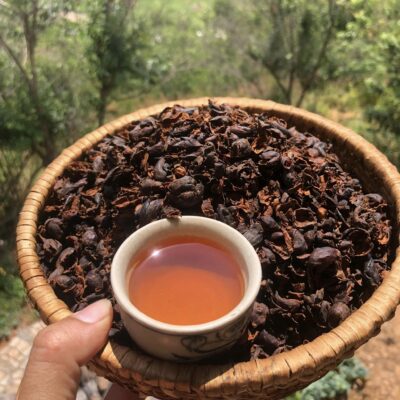Polyscias fruticosa, commonly known as Ming Aralia or Polyscias Ming, is a popular ornamental plant prized for its attractive foliage and ease of care. While the roots of Polyscias fruticosa are not typically the focus of attention, they play a crucial role in the plant’s growth and overall health. Here’s an introduction to Polyscias fruticosa roots:
- Stability and Nutrient Absorption: Like most plants, Polyscias fruticosa relies on its roots to anchor it in the soil and absorb water and nutrients from the surrounding environment. The roots serve as the plant’s lifeline, providing essential hydration and nourishment for healthy growth and development.

- Adaptability: Polyscias fruticosa roots are known for their adaptability to different growing conditions. Whether planted in well-draining soil indoors or outdoors in a garden setting, the roots of Ming Aralia can adjust to various environments, making it a resilient and versatile plant choice for both novice and experienced gardeners.
- Propagation: The roots of Polyscias fruticosa play a crucial role in the plant’s propagation. Ming Aralia can be propagated through stem cuttings, where a section of stem with some roots is planted in soil or a rooting medium to establish a new plant. Healthy root development is essential for successful propagation and the establishment of new growth.
- Health Indicators: Monitoring the roots of Polyscias fruticosa can provide valuable insights into the plant’s overall health. Healthy roots are firm, white or light-colored, and free from signs of decay or disease. Conversely, roots that appear brown, mushy, or have a foul odor may indicate issues such as overwatering, poor drainage, or root rot, requiring corrective action to prevent further damage to the plant.
- Aesthetic Appeal: While the roots of Polyscias fruticosa are primarily functional, they can also contribute to the plant’s aesthetic appeal, especially in bonsai or container gardening. Exposed roots or root formations can add visual interest and character to the plant, enhancing its overall beauty and charm.
In conclusion, while often overshadowed by the plant’s lush foliage, the roots of Polyscias fruticosa play a vital role in its growth, stability, and overall well-being. Understanding the importance of Ming Aralia roots can help gardeners cultivate healthy and thriving plants, whether as indoor specimens or outdoor ornamentals.




















